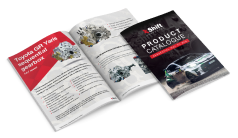Dealers network
Sales and Technical Department
 Toyota Yaris Cup
Catalogues
Toyota Yaris Cup
Catalogues
-
-
-
info@xshiftgearboxes.com
Customer service
+420 724 364 670Toyota, Subaru, Mitsubishi, BMW specialist
+420 732 343 170
-
-
-
- Download
-

Subaru STI R4 PRO
Sequential gearboxTorque rating1000 NmGear ratios6 speed
Subaru STI +PLUS
Sequential gearboxTorque rating1200 NmGear ratios6 speed
Subaru STI +PLUS HELICAL
Sequential gearboxTorque rating1200 NmGear ratios6 speed
Subaru STI
dogbox kit Group NTorque rating800 NmGear ratios5 speed
Subaru STI
Dogbox kitTorque rating800 NmGear ratios6 speed
Subaru STi
SHD DOGBOX kit R4 PROTorque rating1200 NmGear ratios6 speed
Subaru STi
SHD DOGBOX kit +PLUSTorque rating1200 NmGear ratios6 speed
Subaru STi
SHD DOGBOX kit +PLUS HELICALTorque rating1200 NmGear ratios6 speed
Mitsubishi EVO IV-X +PLUS
sequential gearboxTorque rating900 NmGear ratios6 speed
Mitsubishi EVO IV-X STRONG
sequential gearboxTorque rating1200 - 1400 NmGear ratios5 speed
Mitsubishi dogbox kit EVO IV-IX
DOGBOX GR_NTorque rating800 NmGear ratios5 speed
Mitsubishi dogbox kit EVO X
DOGBOX GR_NTorque rating800 NmGear ratios5 speed-
- Subaru STI sequential gearbox R4 PRO 6 speed
- Subaru STI sequential gearbox +PLUS 6 speed
- Subaru STI sequential gearbox +PLUS HELICAL 6 speed
- Subaru STI DOGBOX KIT 5 speed
- Subaru STI DOGBOX KIT 6 speed
- Subaru STi SHD DOGBOX KIT R4 PRO 6 speed
- Subaru STi SHD DOGBOX KIT +PLUS 6 speed
- Subaru STi SHD DOGBOX KIT +PLUS HELICAL 6 speed
-
-
-
-
-
-
-
-
info@xshiftgearboxes.com
Customer service
+420 724 364 670Toyota, Subaru, Mitsubishi, BMW specialist
+420 732 343 170
-
-
-
- Download
Sales Managers
info@xshiftgearboxes.com

















































